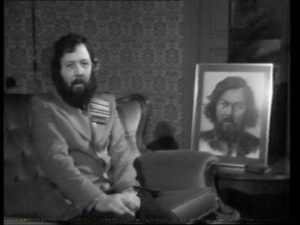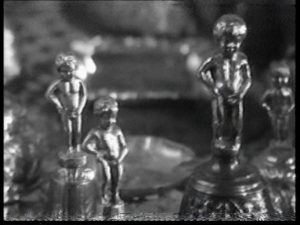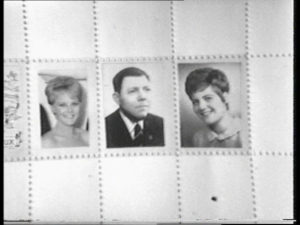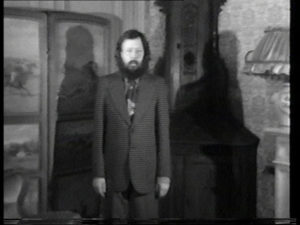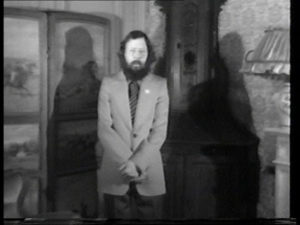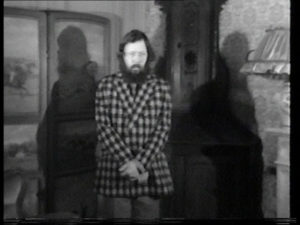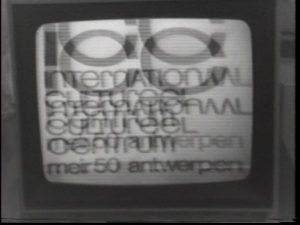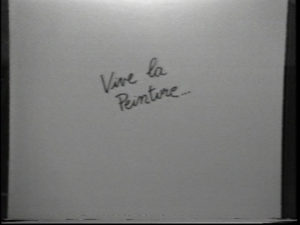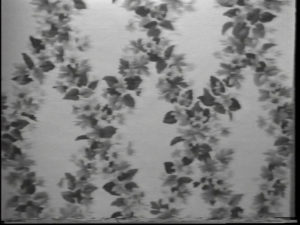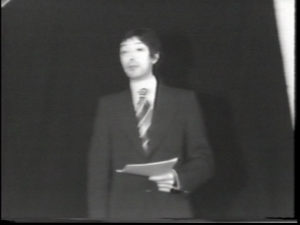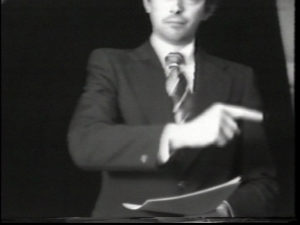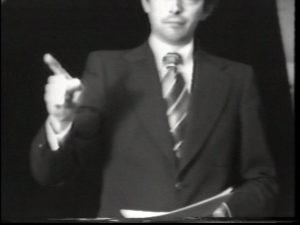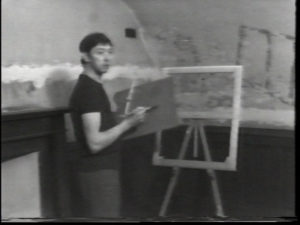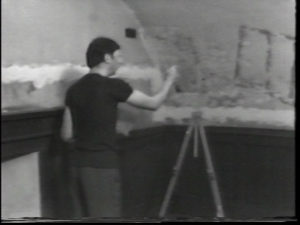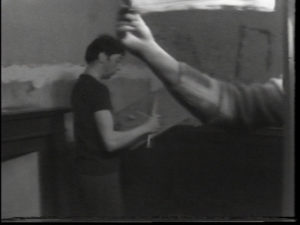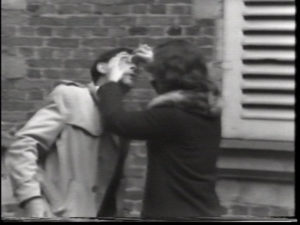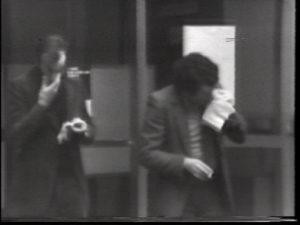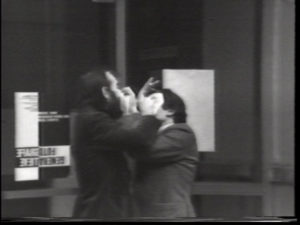Lou Jonas on
Jacques Lennep
The picture, whoever writes it, exists only in the account given of it; or again: in the total and the organization of the various readings that can be made of it: a picture is never anything but its own plural description. ROLAND BARTHES, 1969
At the end of the 1960s, the traditional conceptions of art were profoundly called into question. Artists started experiencing the boundaries between the arts. New means of expression emerged, such as performances, video art, and installations. Works of art tended to leave the museum space to invest a different “scene.” In this effervescent context, Jacques Lennep, a Belgian artist and art historian, founded the Cercle d’Art Prospectif (Circle of Prospective Art). The CAP (1972–1982) was an association of artists whose work explored the concept of “relational art.” Influenced by Umberto Eco’s structuralism[1] and his concept of the “open work,”[2] Lennep formulated his theory of the three relations: the structural relation, the narrative relation, and the social relation. They relate to a multi-layered vision of a piece, showcasing narration and communication as its major components and highlighting the social ties that constitute the piece.[3] These artists’ creations included drawings, paintings, photos, texts, and objects—a variety of techniques that, when assembled, enabled a plethora of interpretations to emerge.
Lennep présente – Alfred Laoureux, Collectionneur, in: Alfred Laoureux, Collectionneur, 1977, video stills © Jacques Lennep, VG Bild-Kunst, Bonn
In Lennep’s work, art, its history, and its conventions are questioned constantly. Naturally, his artistic approach was influenced by the art historical training he received at the Université Libre de Bruxelles. The artist vividly claims this double status, and this is ultimately conceptualized in the idea of his Musée de l’homme (Museum of Mankind). In this project, which he began in 1974, Lennep recorded the testimonies of individuals who had made their life into a “creation space.” In 1978, for instance, the Neue Galerie in Aachen exhibited items from the collection of Alfred Laoureux, the heir of a family of compulsive collectors of independent means, who had lost his fortune. Laoureux had constituted a museum from his family’s collections, as a symbol of his aspiration to a form of social and artistic legitimation. In the show at the Neue Galerie, a series of portraits, stamps, cigar rings, and medals bearing the image of Alfred Laoureux were presented, as well as his collection of costumes, photographs, and newspaper clippings illustrating public events he had attended. Two videos were also exhibited, one showing a filmed interview and the other a parade of Laoureux in his thirty-six costumes. Visitors could even meet Laoureux in person during a signing session. In his “Museum of Mankind,” Lennep offered a personal vision of art, far from its traditional conception. The exhibition was made into a social experience that enabled the development of critical thinking regarding the discourse held by the museum as an institution.
Les 36 costumes d’Alfred Laoureux, in: Alfred Laoureux, Collectionneur, 1977, video stills © Jacques Lennep, VG Bild-Kunst, Bonn
In the early 1970s, Lennep produced a series of “text paintings.” These conceptual works combined old gilded wooden frames with short descriptions of masterpieces, written in pencil on a blank canvas. For example, he described Vermeer’s Girl Reading a Letter at an Open Window (1657) as follows: “The open window reflects the face of a woman reading a letter. The room is separated by a bright yellow curtain and is filled with a blonde light.”[4] The text serves as an intermediary for the symbolic completion of the painting. Reading it implies a mental action that consists in visualizing the original. As for the frame, it facilitates the link between the text and the tradition of easel painting, of which the frame is an essential component. Painting is thus being summarized by another technique. It exists merely through the written message referring to it. Recovery as a process would be used regularly by Lennep and found particular application within the space offered by new media.
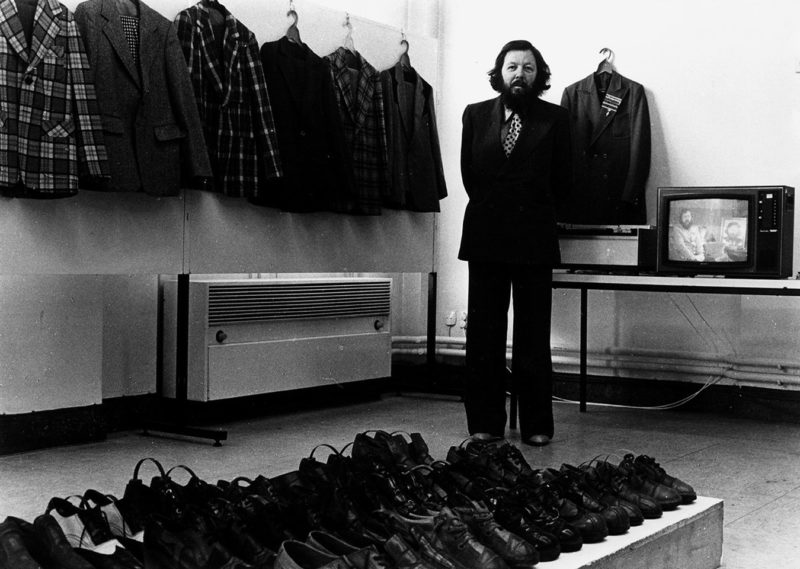
Alfred Laoureux in front of Jacques Lennep’s video Lennep présente Alfred Laoureux collectionneur (1977) and amid his collection of suits and shoes in the exhibition Jacques Lennep expose Alfred Laoureux – Collectionneur, atrium, Aachen, January 27 – March 5, 1978 © Jacques Lennep, VG Bild-Kunst, Bonn
Video, as a medium that emerged in the early 1970s, was quickly invested by CAP artists. On weekends, they would meet at Jacques-Louis Nyst’s[5] home, in Sprimont, to shoot short video sequences using equipment borrowed from the RTC (a local television station in Liège). Some of them would also go to Antwerp to record their project in collaboration with the “Continental Video” studio team.[6] During these first experiments, video is often the subject of structural analysis.
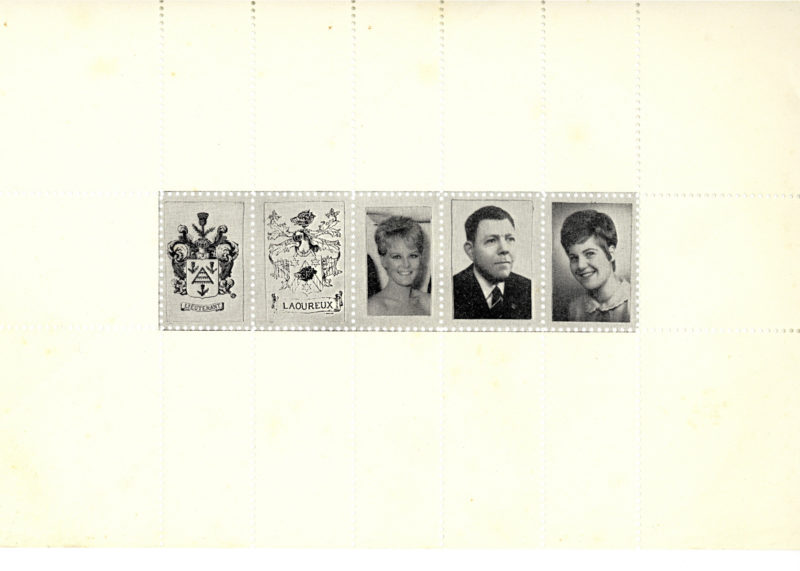
Part of a series of three blocks of five stamps each showing the emblems of the Lieutenants‘ and the Laoureux‘, Petula Clark, Alfred Laoureux and his daughter Claudine © Jacques Lennep, VG Bild-Kunst, Bonn, Archive Wolfgang Becker
Between 1973 and 1974, Jacques Lennep directed a series of videos under the title Video relationnelle (Relational Video). Among these is L’écran (The Screen), a visual gag featuring a television set the artist seems to be trapped in. Lennep can be seen touching the edges of the frame with his hand, pretending to stroke the glass screen, and finally passing his hand through it. The same principle appears in TV réalisme (TV Realism) which shows a landscape view displayed on a TV. Our gaze is immediately attracted to the bottom of the image, where the hands of two performers appear. The hands support the television set, which has been emptied of its contents and is surrounded by a white paper surface that obliterates part of the landscape behind it. The illusion is lifted when the performers leave the scope of the camera in a lateral movement, taking the television set with them. Finally, Dialogue avec une caméra (Dialogue with a Camera) is an attempt to communicate with the camera. A general shot shows Lennep performing “arm signals”[7] for the camera, which responds to him by altering the opening of the lens. In these three sketches, Lennep deconstructs certain components of the video technique: monitor, frame, screen, camera. The spectator, whose beliefs are being tested, is therefore invited to question the specificities of this new medium.
La Tapisserie, in: Vive la peinture!, 1975, video stills © Jacques Lennep, VG Bild-Kunst, Bonn
This deconstruction also involved artistic traditions such as painting or sculpture. Vive la peinture! (Long Live Painting!) is the title given to a series of three sketches, respectively named “La Tapisserie” (The Tapestry), “Vive la peinture!” (Long Live Painting!), and “Le Tableau” (The Painting). Produced independently by the artist between 1974 and 1975, they were assembled by the “Continental Video” studio team to be broadcast during a festival.
The first sequence, “La Tapisserie,” shows a fixed shot of a tapestry with flowers, which might evoke the private, domestic sphere. In a more general way, it could be seen as a reference to the decorative arts, a tradition that was long marginalized by the history of art and which Lennep might have humorously been seeking to legitimize by exclaiming “Long live painting!” at the end of the sequence. At the same time, this utterance acts as a link, since it introduces the following sequence, which bears that title.
Vive la peinture, in: Vive la peinture!, 1975, video stills © Jacques Lennep, VG Bild-Kunst, Bonn
In the second sequence, Lennep imitates the act of painting while whistling gaily. Equipped with the traditional attributes of the painter (palette and brush, canvas and easel), he performs the codified gestures of an artist in search of inspiration, looking at a subject situated outside the camera frame. As he pretends to paint (his palette does not actually have any colors), the canvas, stretcher, and easel disappear from the screen one by one. While the physical deconstruction of the painting as an object ensues, an arm comes into the foreground from the right and starts to paint the semi-transparent surface of a pane of plexiglass in white. This sudden appearance creates an opposition between the front and the back of the representation. Indeed, while the painting is not advancing in the background, the process is made visible in the foreground through the plexiglass. The plexiglass acts as an additional screen, which it emphasizes and duplicates. It also acts as a threshold or boundary between the space of the depiction and the space in which the spectator stands. The art of painting literally escapes from its frame—that of the painting itself—to eventually designate another frame: that of the television screen and, behind it, that of the spectator.
Le Tableau, in: Vive la peinture!, 1975, video stills © Jacques Lennep, VG Bild-Kunst, Bonn
Finally, in “Le Tableau,” Lennep steps into the shoes of a critic or historian immersed in the absurd analysis of a work of art, which at first appears to be invisible but then proves to be none other than the television set as seen from the inside. He shows particular interest in describing its format (length: approx. 50 cm, height: approx. 40cm), its subject (a sleepy viewer slouching in his chair), and the light source (directed towards the character and casting a chiaroscuro onto the stage). Lennep uses the method of a scientific presentation. However, the serious nature of the presentation is questioned when we realize the fraud, namely the transfer made between painting and video. Video ends up substituting for painting, which disappears from the discourse entirely.
Une poussière dans l’oeil, 1975, video stills © Jacques Lennep, VG Bild-Kunst, Bonn
The new possibilities offered by video, particularly the ability to present the development of an idea or a process over time, contributed to remediating a tradition whose alleged end had been predicted repeatedly throughout the history of art. In a double movement, video perpetuates the aura of painting while offering a new interpretation. With Lennep, this remediation is done using humor and derision, which blurs the line between tribute and a form of subversion. We will end on this element of detail in order to insist on a process that is at the heart of Jacques Lennep’s approach and which is evoked in the title of the box. For Lennep, re-creation concerns both “moments” in art history that he chooses and comments on, as well as elements from his own creations, which are repeated with variations and are applied to different media throughout his work. Lennep would continue to expand his field of experimentation and pursue his analysis of the history of art. He returned to video in the early 2000s and made a series of “homemade” sequences in which he referred to the works of Van Gogh, Monet, Duchamp, and Warhol. Here he used quotation, a form of reprise already present in his photographic self-portraits from the early 1970s, where he imitated famous works such as Caravaggio’s Bacchus or Raphael’s Donna velata. Finally, it is interesting to note that in 1975 these photographs were integrated by the artist in a thermoformed box entitled Re-creation.[8] 1780 characters
[1] He was also particularly inspired by Roland Barthes’s theories on language and visual polysemy.
[2] Umberto Eco, L’Oeuvre ouverte, Paris: Seuil, 2015 (1965).
[3] For a precise definition of “relational art,” see the theoretical publication edited by Jacques Lennep, Relation et Relation. Contribution à l’étude de l’idée et de l’attitude relationnelles, Crisnée: Yellow Now, 1981, and the exhibition catalogue CAP – Art relationnel. Un Aspect de l’art contemporain en Belgique, Brussels: Dexia Banque, and Tournai: La Renaissance du livre, 2002. Moreover, many illustrations of the practices of relational art can be found in Jacques Lennep, Arts en relation. Techniques et pratiques d’un art relationnel de 1973 à nos jours, Brussels: 100 Titres, and Crisnée: Yellow Now (“Côté arts” collection), 2012.
[4] Tableau-texte d’après Vermeer (Text-painting after Vermeer), 1975.
[5] Jacques-Louis Nyst is considered a pioneer of video art in Belgium. In close collaboration with his wife, Danièle, he produced a considerable amount of work combining poetry and theoretical thinking.
[6] See also the article devoted to the work of Hubert Van Es, which briefly addresses the context of video production in Antwerp in the 1970s.
[7] Using flags held at arm’s length, he reproduces a semaphore alphabet, a visual communication method used in the Navy.
[8] This box also holds a fragment of wallpaper on which the phrase “Vive la peinture!” is written. This refers to the video described above. The elaboration of a single theme on multiple supports is representative of the artist’s relational Approach.
